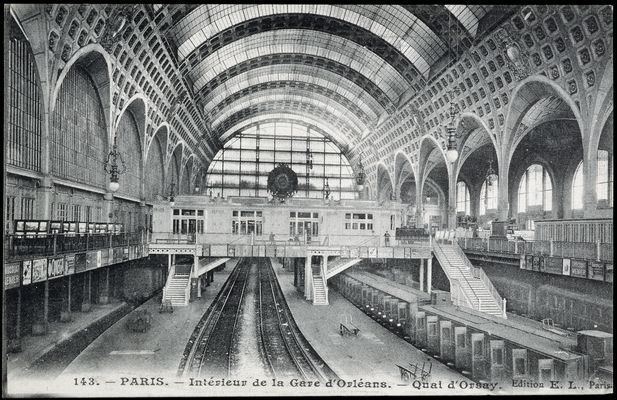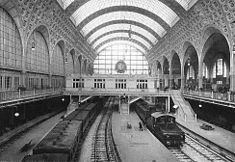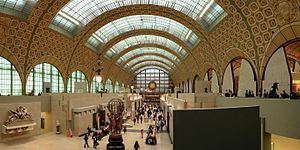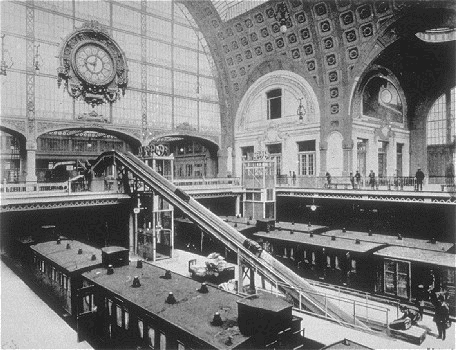Opened 1900 | ||
 | ||
Similar Gare d'Orsay‑Ville, Invalides, Musée d'Orsay, Gare du Guichet, Avenue Henri Martin | ||
Lokomotywa na dworcu orsay locomotive at gare d orsay railway station 2010
Gare d'Orsay is a former Paris railway station and hotel, built in 1900 to designs by Victor Laloux, Lucien Magne and Émile Bénard; it served as a terminus for the Chemin de Fer de Paris à Orléans (Paris-Orléans Railway). It was the first electrified urban rail terminal in the world, opened 28 May 1900, in time for the 1900 Exposition Universelle. After closure as a station, it reopened in December 1986 as the Musée d'Orsay, an art museum. The museum is currently served by the RER station of the same name.
Contents

History
The site was occupied by the Palais d'Orsay, intended for the Council of State. It was begun in 1810 but not completed until 1840, when its ground floor was occupied by the Council. In 1842 the Cour des Comptes was housed in the first floor. After the fall of the French Second Empire in 1870, the Paris Commune briefly took power from March through May 1871. The archives, library and works of art were removed to Palace of Versailles and eventually both the Conseil and the Cour des Comptes were rehoused in the Palais-Royal.

The largely empty Palais d'Orsay was burned by the soldiers of the Paris Commune, along with the Tuileries Palace and several other public buildings associated with Napoleon III, on the night of 23–24 May 1871, an event which was described by Émile Zola.

The site was purchased by the Compagnie Paris-Orléans, which erected the monumental terminus station for its railways to southwestern France. The station had electrified tracks, modelled on the Baltimore Belt Line electrified railway which had been completed in 1895. The station was constructed in Beaux-Arts style and the western and southern sides of the building included a 370-room hotel.

By 1939 the station's short platforms had become unsuitable for the longer trains that had come to be used for mainline services, and the Gare d'Orsay was closed to long-distance traffic, though some suburban trains of the SNCF continue to use its lower levels to this day. The hotel closed at the beginning of 1973.

The former station was used as a collection point for the dispatch of parcels to prisoners of war during the Second World War, and after the war as a reception centre for liberated prisoners on their return; a plaque on the side of the building facing the River Seine commemorates this latter use.
It served as the setting for several films, including Orson Welles' version of Franz Kafka's The Trial, and is a central location in Bernardo Bertolucci's The Conformist. It was in the ballroom of the station's hotel that General Charles de Gaulle held the press conference at which he announced his "availability to serve his country" on 19 May 1958, ushering in the end of the French Fourth Republic.
As well, it was the inspiration for Penn Station in New York when Alexander Cassatt, president of Pennsylvania Railroad, traveled on his annual trips to Europe in 1901.
Museum
In 1977 the French Government decided to convert the station to a museum. The building was listed as a historical monument in 1978 and reopened as the Musée d'Orsay in December 1986. The chief architect for the conversion was the Italian Gae Aulenti. There is a huge clock which still works in the main terminal housing the museum.
